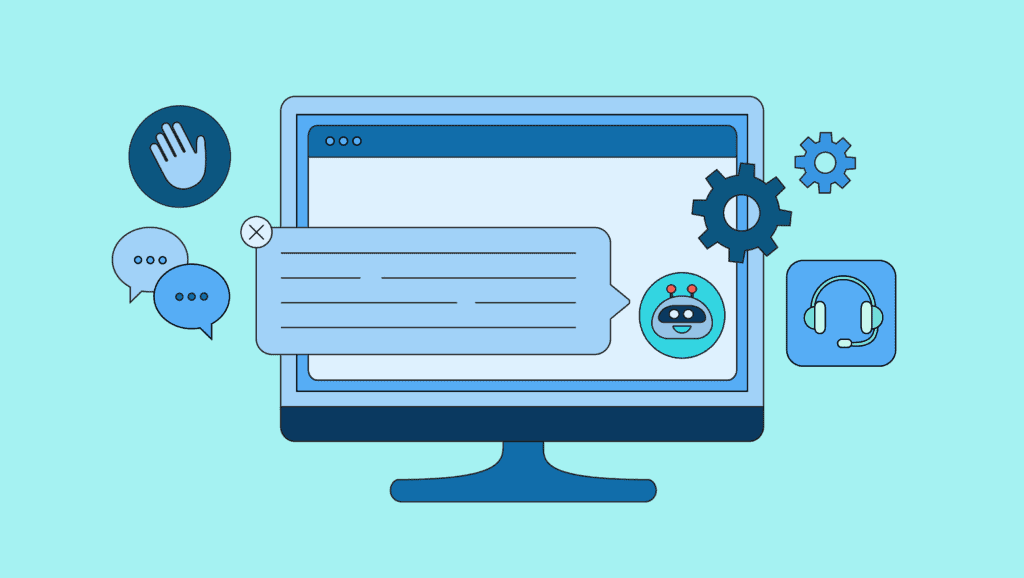In the ever-evolving realm of Artificial Intelligence (AI), chatbots have taken center stage due to their remarkable ability to engage in human-like conversations. OpenAI’s cutting-edge language models, GPT-3.5 and GPT-4, have captured significant attention for their impressive conversational capabilities. This blog delves into the distinctions and progressions between GPT-4 and ChatGPT-3.5, shedding light on their potential applications and exciting prospects.
Unveiling the Evolution of AI Chatbots
Artificial Intelligence-powered chatbots have evolved over time to simulate human-like conversations and aid users in various tasks. The progression of these chatbots has been characterized by increased complexity and functionality. This blog explores the advancements brought about by GPT-4 and ChatGPT-3.5.
A Peek into GPT-3.5
GPT-3.5, or Generative Pre-trained Transformer 3.5, stands as an advanced language model developed by OpenAI. Leveraging deep learning techniques, it generates human-like responses based on text inputs. GPT-3.5’s ability to comprehend and produce coherent and contextually fitting text marks a significant milestone in AI chatbot evolution.
GPT-4: Elevating Conversational AI
GPT-4 takes the world of conversational AI to new heights. Powered by extensive training on vast datasets, GPT-4 exhibits enhanced language comprehension and response generation compared to its predecessor. OpenAI’s aim with GPT-4 is to bridge the gap between human-like conversational abilities and AI models.
The Edge in Responsiveness and Context Recognition
A key differentiation between GPT-3.5 and GPT-4 lies in their responsiveness and context recognition. GPT-4 boasts an impressive ability to generate coherent responses tailored to specific scenarios. It excels at understanding conversation context, resulting in more accurate and meaningful replies.
Efficient Learning and Adaptation
GPT-4 demonstrates enhanced learning and adaptation capabilities over ChatGPT-3.5. Its capacity to learn from smaller datasets significantly reduces the time and computational resources required for training. This feature facilitates faster deployment and improved real-time interactions.
Enriched Vocabulary and Multilingual Support
Thanks to its extensive training data, GPT-4 boasts a broader vocabulary compared to GPT-3.5. This broader lexicon enables it to produce more diverse and precise responses, enriching conversations with a wider array of expressions and nuances. Additionally, GPT-4 makes substantial strides in supporting multiple languages, enabling conversations across the globe.
Upholding Privacy and Safety
OpenAI has placed a strong emphasis on user privacy and safety with GPT-4. Building upon lessons from GPT-3.5’s occasional biases and controversial outputs, GPT-4 incorporates refined safeguards to address these concerns. Fairness, transparency, and user protection remain paramount, rendering GPT-4 a more dependable conversational AI for diverse users.
GPT-4 and ChatGPT-3.5’s Potential in Everyday Life
The widespread adoption of GPT-4 and ChatGPT-3.5 holds the potential to revolutionize various aspects of daily life, offering endless opportunities:
- Virtual Assistants: GPT-4 and ChatGPT-3.5 could function as efficient AI-powered virtual assistants, aiding in tasks like appointment scheduling, inquiries, and personalized recommendations.
- Language Learning: With refined language comprehension, GPT-4 and ChatGPT-3.5 could make language learning more immersive by simulating conversations with native speakers, offering real-time feedback and practice.
- Customer Service: Introducing GPT-4 and ChatGPT-3.5 into customer service could enhance the efficiency and effectiveness of automated responses, delivering personalized and prompt assistance.
- Mental Health Support: AI chatbots based on GPT-4 and ChatGPT-3.5 could be tailored to offer empathetic and supportive interactions, aiding individuals with mental health concerns and providing initial guidance.
GPT-4 and ChatGPT-3.5 signify substantial advancements in conversational AI, pushing the boundaries of human-like interaction. Their heightened responsiveness, context recognition, efficient learning, and multilingual capabilities pave the way for more natural and interactive conversations. As the applications of these AI models proliferate, addressing ethical concerns and refining privacy and safety measures remains pivotal. The horizon of conversational AI appears promising, holding the potential to enhance various sectors and make life more convenient and engaging for us all.




